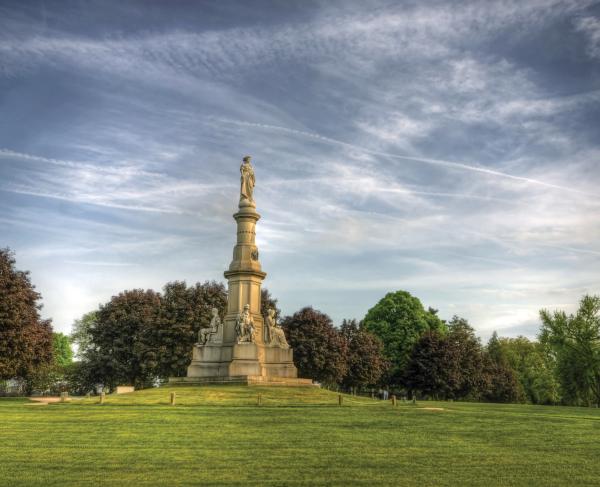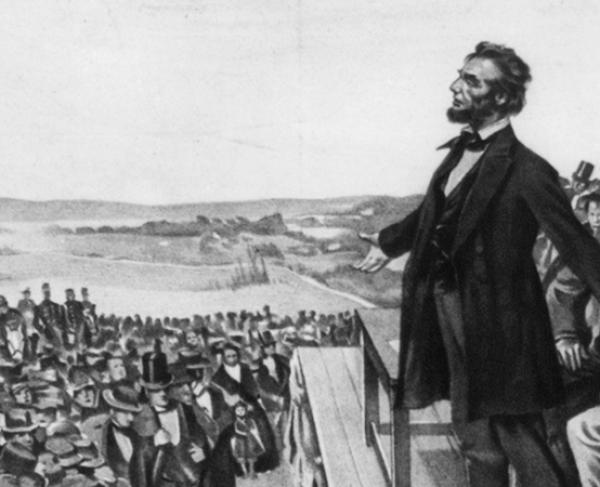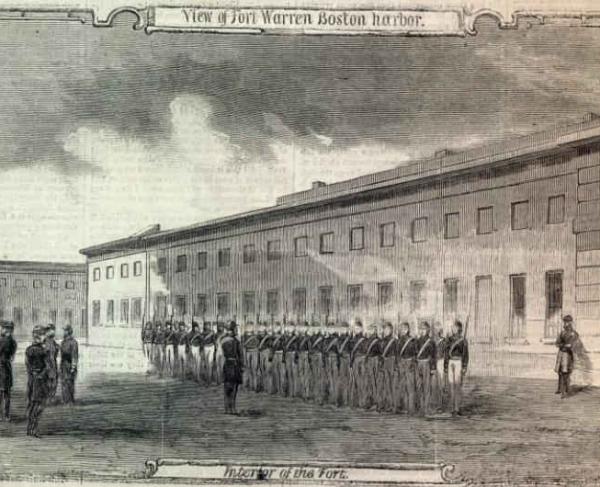The President Has Been Shot
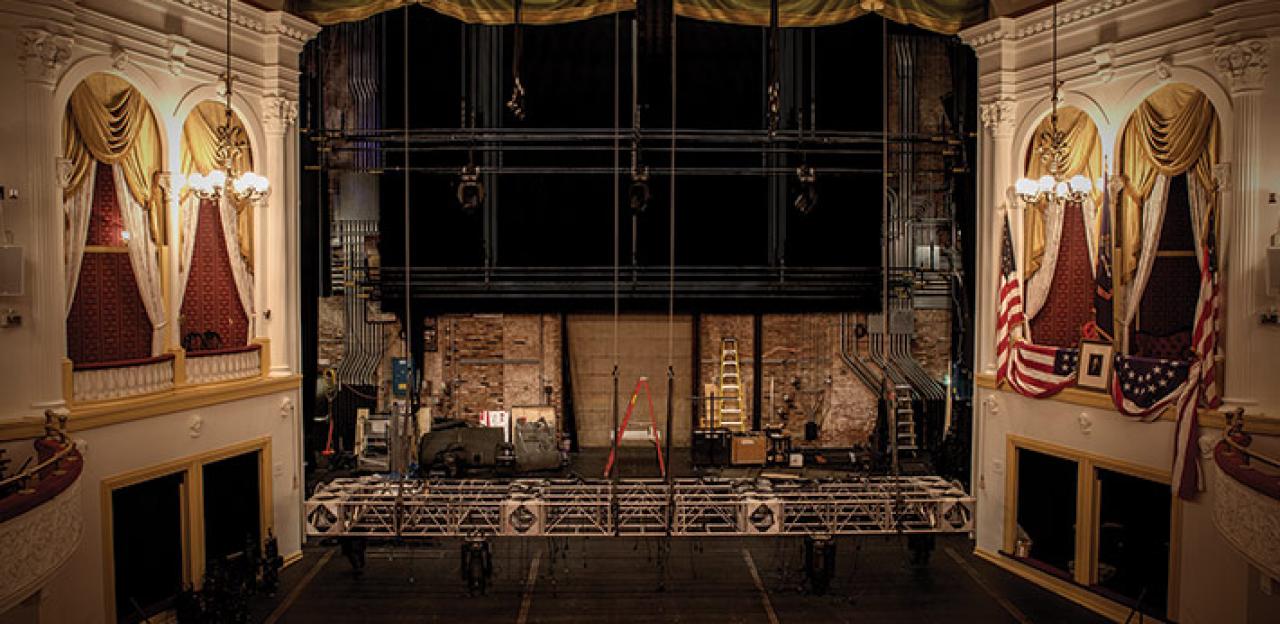
On Friday, April 14, 1865, just five days after Confederate Gen. Robert E. Lee’s surrender at Appomattox, actor John Wilkes Booth assassinated President Abraham Lincoln, sending the Federal government spiraling into pandemonium. As the nation plunged into mourning, Lincoln’s personal friend, Secretary of War Edwin M. Stanton, spearheaded the largest manhunt in his nation’s history.
The Civil War Trust was granted exclusive, behind-the-scenes access to photograph surviving artifacts of the assassination and ensuing investigation, trials, and executions. We extend our special thanks to the staff and management of Ford’s Theatre, the Lincoln Center for Education and Leadership and the National Park Service Resource Center for their incredible cooperation and generosity.
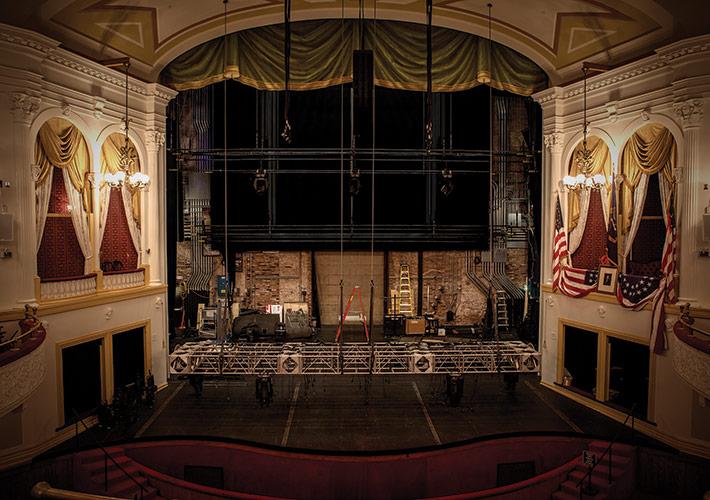
Ford's Theatre in Washington, D.C. The Presidential box is on the right of the stage.
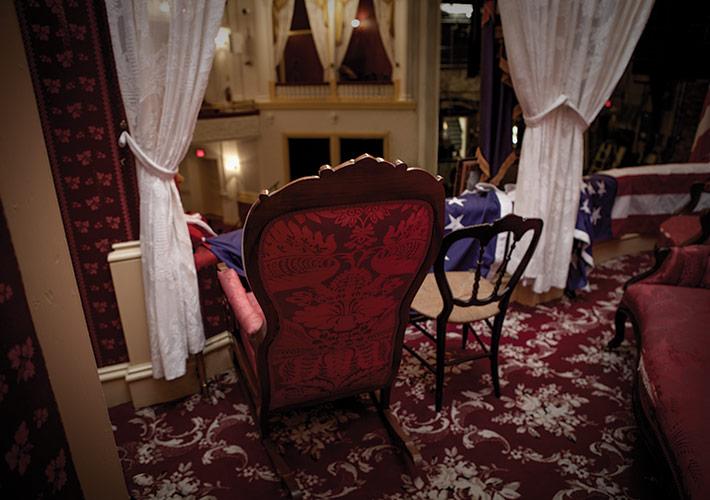
The furniture inside the state box at Ford’s Theatre is a mixture of originals and replicas. The president’s large rocker mirrors the original, currently housed at the Henry Ford Museum in Dearborn, Mich. A coordinating crimson tufted sofa set back from the balcony is genuine.
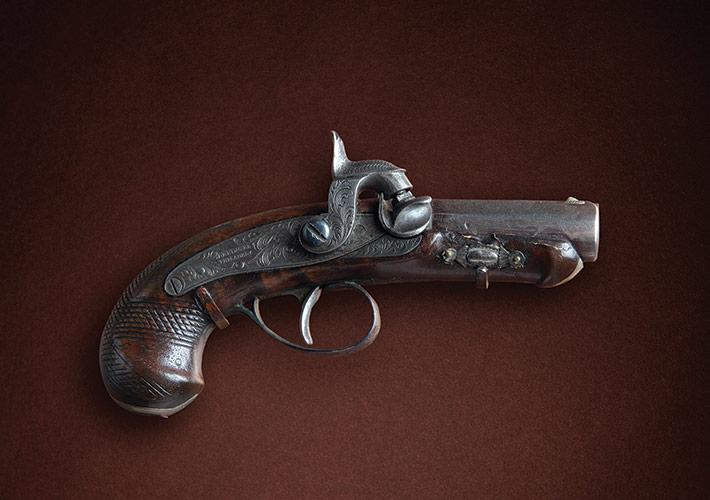
The .44 caliber, 6-inch long Philadelphia Deringer with rifled barrel used by actor John Wilkes Booth at point-blank range against the back of President Lincoln’s head. He fired a single shot, then dropped the gun in the presidential box before brandishing a knife and jumping onto the stage.
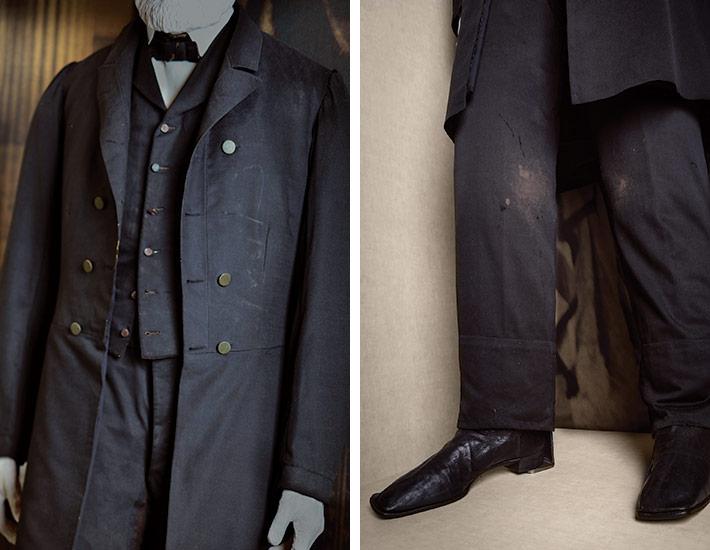
A frock coat (left), waistcoat, trousers and bow tie belonging to President Lincoln and allegedly worn on the night of the assassination. Unlike the Brooks Brothers overcoat he was wearing that night, these items were not damaged by the souvenir collectors who cut samples from his blood-soaked coat and locks of his hair. The Brooks Brothers trousers (right) and size 14 boots allegedly worn by the President the night of his assassination. Note the wear to the inner knees of the pants caused by friction against a saddle when riding horseback.
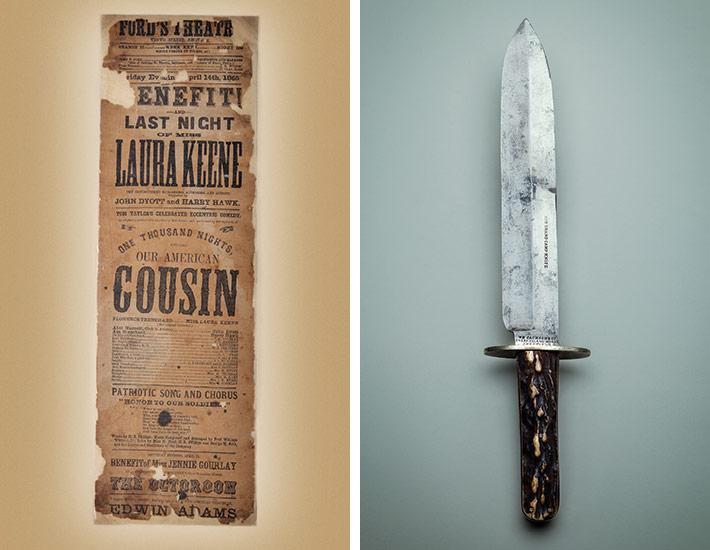
Playbill (left) from the show attended by President and Mrs. Lincoln along with Maj. Henry Rathbone and his fiancée, Clara. Lt. Gen. Ulysses and Mrs. Grant turned down the president’s invitation to attend. His bodyguard Ward Hill Lamon was in Richmond. One of several knives (right) confiscated during the investigation of the conspirators and used as evidence at their trial. Some researchers believe it to be the knife used by Booth to stab Maj. Rathbone during a scuffle inside the state box, but its provenance remains unclear.
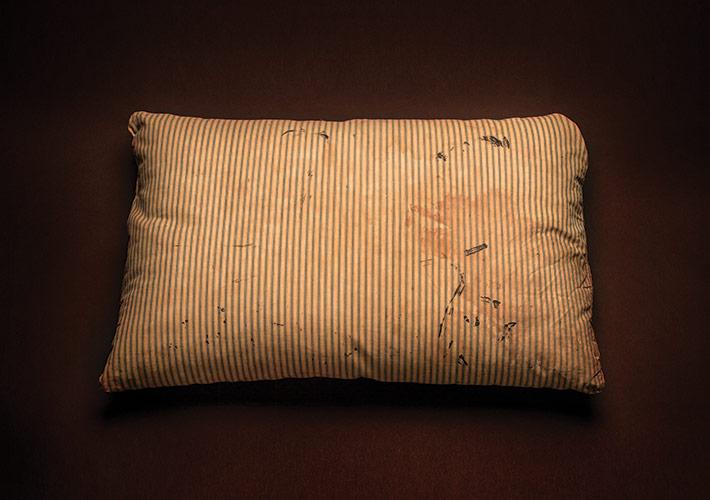
After being carried across the street from Ford’s Theatre to the Petersen House, Lincoln was placed on a bed in an upstairs room. This bloodstained pillow is one of several that supported his wounded head.
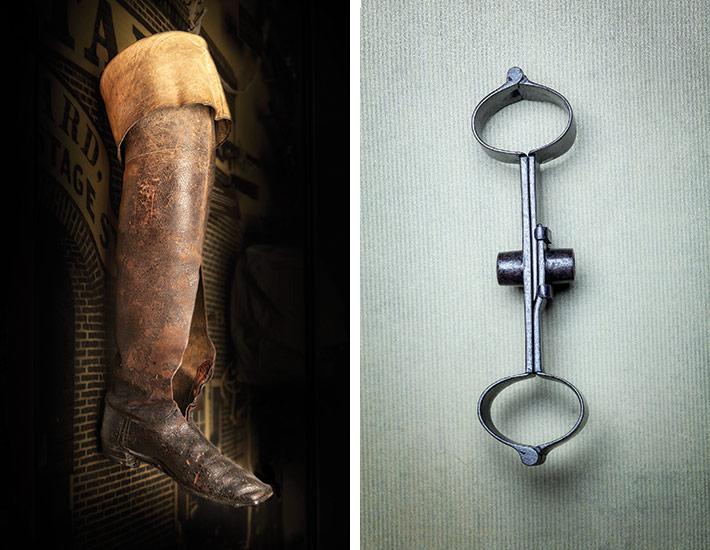
Early on the morning of April 15, Booth arrived at the home of Dr. Samuel Mudd, seeking medical care for his injured left leg. The boot (left) was cut from Booth’s swollen ankle and discovered five days later by investigators. Handcuffs (right) of assassination of Dr. Samuel Mudd.
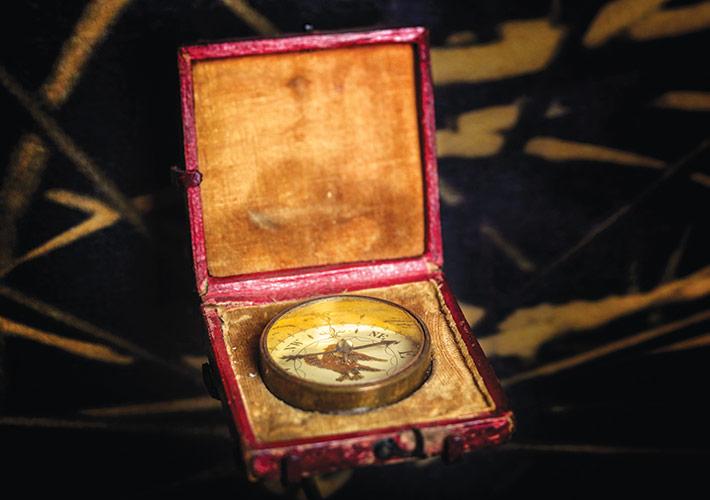
Booth used this compass to navigate during his 12-day flight from authorities across Maryland and Virginia. It was taken from his pocket as he lay dying on the Garrett Farm.
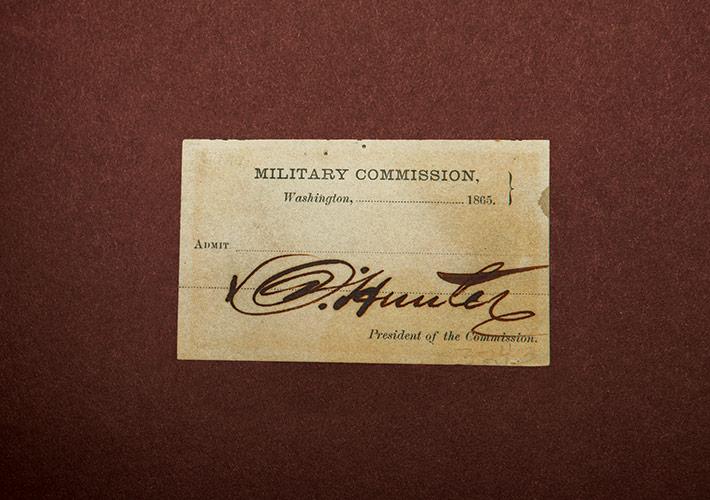
Pass to attend the military tribunal of the Lincoln conspirators signed by first officer Brig. Gen. David Hunter.
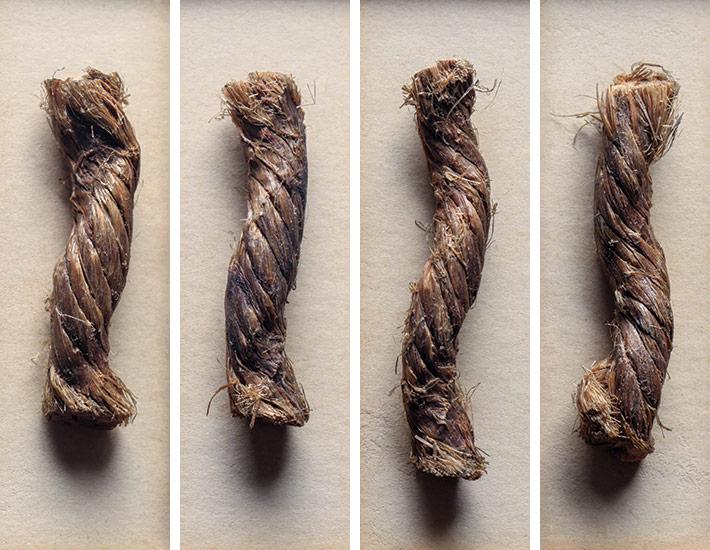
Fragments of the nooses used to hang conspirators. From left to right: Mary Surratt, George Atzerodt, Lewis Powell, David Herold.
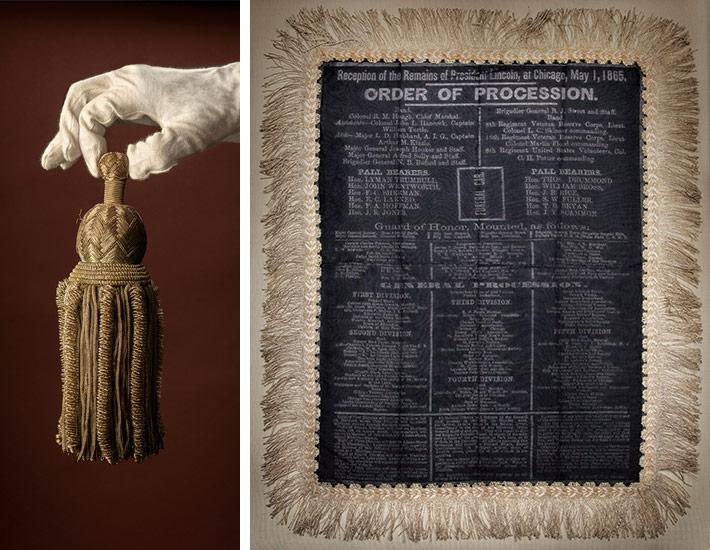
The catafalque (left) on which Lincoln’s coffin rested has since been used for the lying in state of several other presidents and dignitaries in the Capitol Rotunda. This original tassel from 1865, along with other fabric draping, has been replaced several times, but always with similar textiles. A silk commemorative poster (right) with the schedule of President Lincoln’s funeral procession in Chicago on Monday, May 1, 1865.
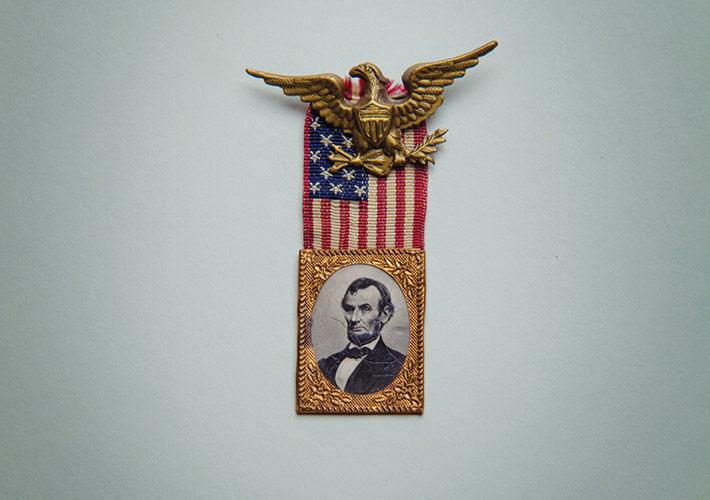
Commemorative pins were worn across the country as millions of citizens mourned the loss of the president.
Thank you to Jamie Betts, Shenandoah Sanches and Shawn Keegan for their photography assistance. Very special thanks to William Cheek, Laura Anderson, Bob Sonderman, Heather Hoagland, Lauren Beyea, Lisa Ricketts, April Bryan, Ashley Intemann, Maria Salas, Robbin Owen and the NPS.
